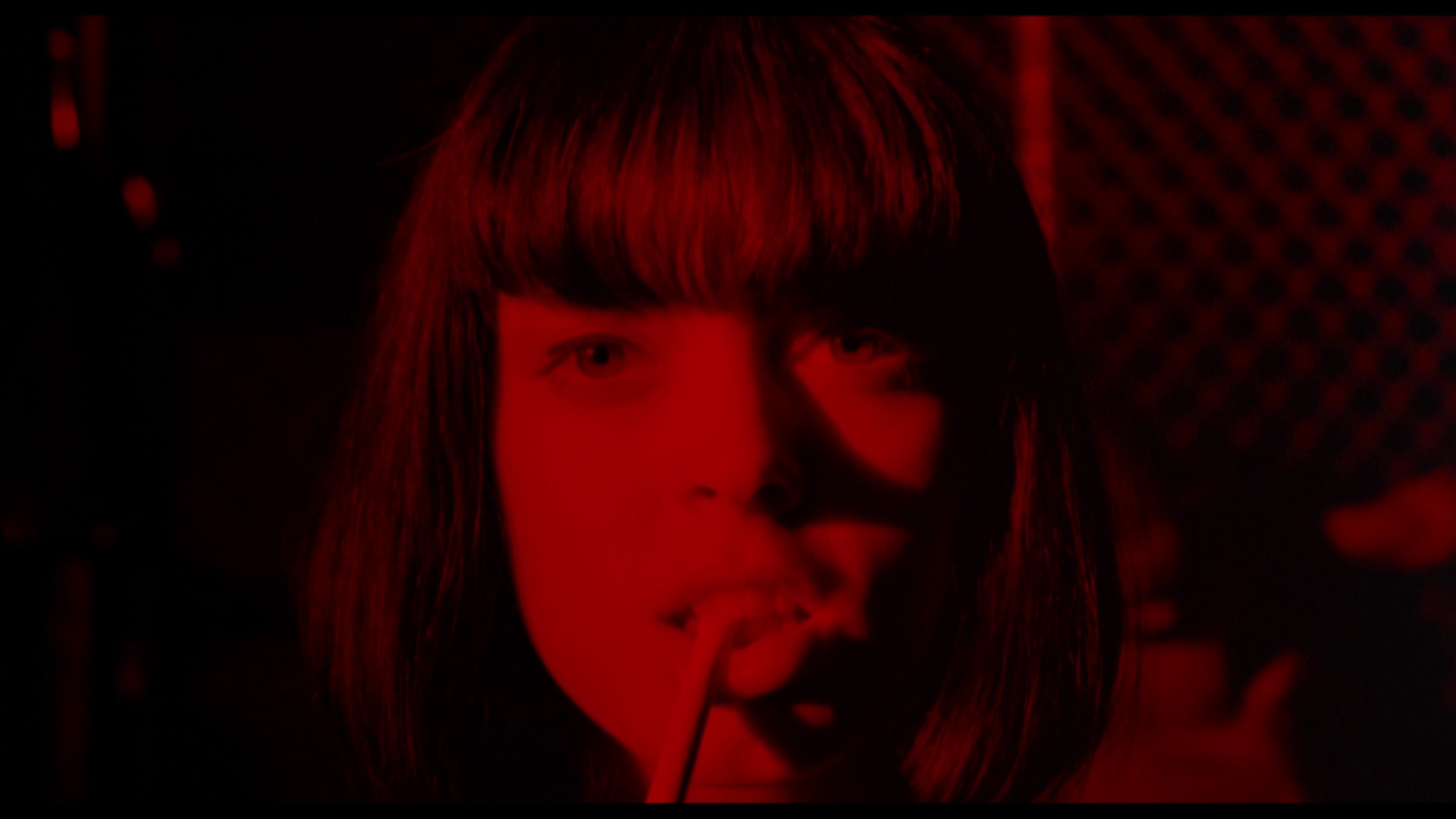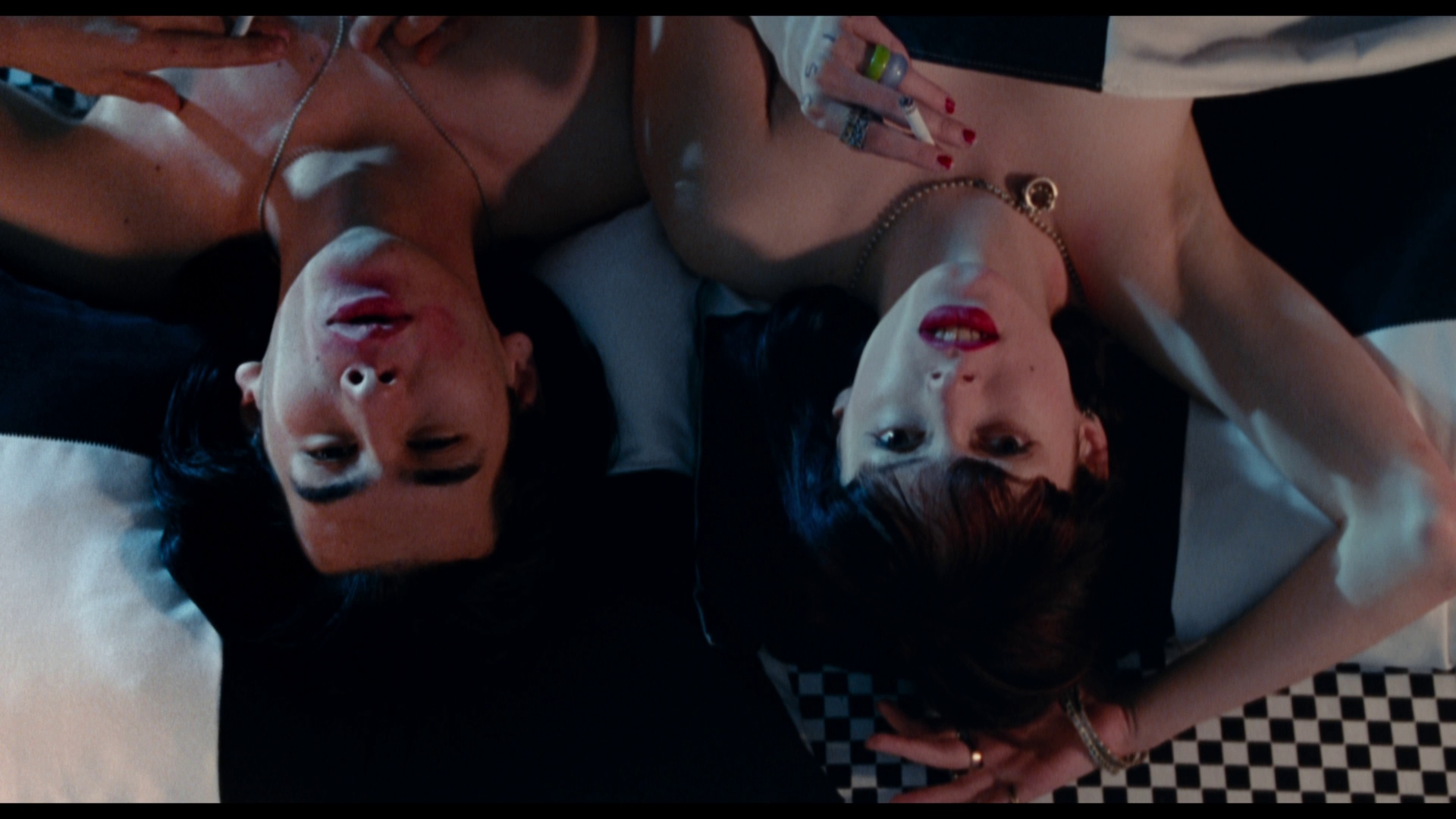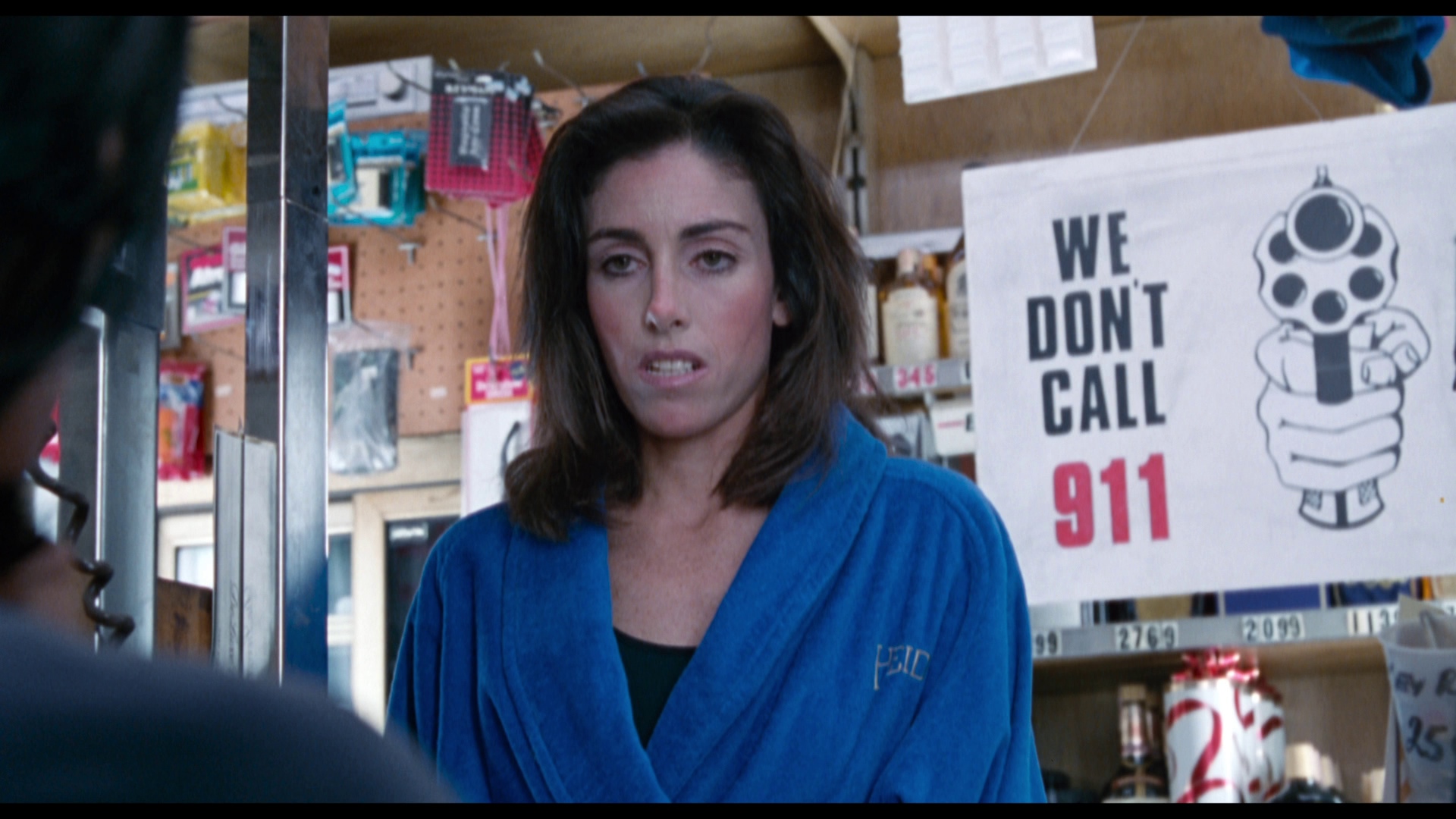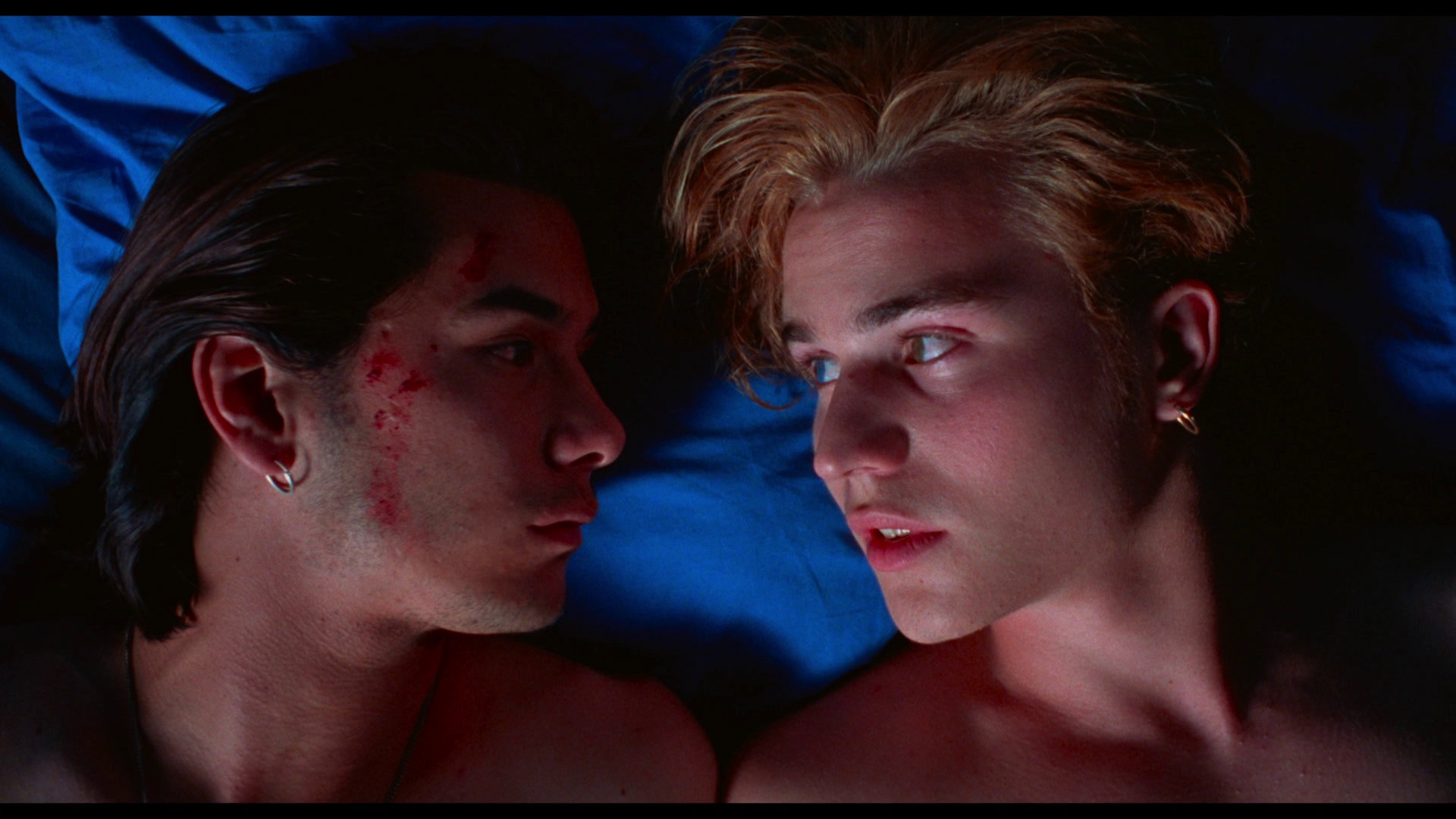Gregg Araki’s Teen Apocalypse Trilogy

See more details, packaging, or compare
Synopsis
Take the conventions of the American teen movie, transpose them to Los Angeles’s freaky fringes, anchor them in an unapologetic vision of sexual fluidity, and top it all off with heavy doses of Gen X disillusionment, gonzo violence, and hallucinogenic surrealism, and you’ll end up with something like these audacious transgressions from New Queer Cinema renegade Gregg Araki. Gleefully mixing slacker irony with raw sincerity, Godardian cool with punk scuzz, the savagely subversive, hormone-fueled films that make up the Teen Apocalypse Trilogy pushed 1990s indie cinema into bold new aesthetic realms, while giving blistering expression to adolescent rage and libidinal desire.
Picture 7/10
Gregg Araki's Teenage Apocalypse Trilogy comes to Blu-ray from The Criterion Collection, presenting the films Totally F***ed Up, The Doom Generation , and Nowhere in 1080p/24hz high-definition, sourced from new restorations. Totally F***ed Up comes from a new 2K restoration and is presented in the aspect ratio of 1.33:1 on its own dual-layer disc, while the other two share a dual-layer disc and are sourced from 4K restorations in the aspect ratio of 1.85:1. I am working from the discs included with the 4K/Blu-ray edition. Outside of the lack of a 4K disc and coming in a standard Scanavo case instead of a digipak, the releases are the same.
Criterion utilizes newer restorations overseen by Strand Releasing, starting with the 2K scan for Totally F***ed Up from the 16mm original negatives. Like the other films in the set, it looks fine—probably better than I expected—but still falls short of its full potential.
The image is generally stable and clean, with decent detail, but there’s a noticeable digital, video-like quality, aside from the sequences originally sourced from video. This is primarily related to how grain is rendered, which has a slightly digitized appearance, creating a distracting "buzzy" effect that’s notable to varying degrees throughout. Criterion’s encode is open to improvement, admittedly, but I think some of it is also baked into the master that has been supplied to Criterion.
There are, however, some positives. The restoration work has cleaned up the image well, leaving only minor blemishes. Colors are nicely saturated, and black levels are solid, with decent—if imperfect—depth in the shadows. Despite the limitations of the base master, the restoration’s strengths suggest the film elements have held up over the years, likely due to proper storage of the negatives, whether intentional or not. Araki even touches on this in the included 2005 commentary, expressing his surprise at how good the film looked working on the master at the time. That said, it’s clear that a better digital master could have been produced from this material.
The Doom Generation, on the other hand, is probably a little more limited by the source materials used for the base scan (a 35mm interpositive as opposed to the original negative), but I still feel this could also be better. Though the Blu-ray doesn’t look significantly different from the 4K presentation, the same issues remain, including the slightly "dupey" image quality, which looks soft overall, with finer details never quite popping as they should. Black levels are also problematic, still appearing murky and occasionally crushing out detail in the darker scenes, though they seem a bit milkier on the Blu-ray compared to the 4K version—likely due to the color space of the 4K.
Colors, while still fine, lack the vibrancy seen in the 4K edition, offering more punch, especially with the bolder reds. As for the film’s texture, the same grain management issues are present here, with the grain appearing smoothed out in places and almost entirely absent in certain sequences. This lack of texture contributes to a somewhat soft and smudgy image, leaving The Doom Generation with a flat, less film-like appearance, something more akin to video at times. Ultimately, the Blu-ray presentation doesn’t feel significantly different from the 4K in this regard and is likely similar to Strand’s Blu-ray release (that I haven't seen), which used the same restoration.
Nowhere remains the best-looking film in the set. It shares the same strengths and weaknesses as the 4K version, with striking colors—greens, blues, and reds all looking quite good, even if they don’t pop as boldly as they do in the 4K presentation. The Blu-ray handles colors well, even blending reds and blacks without succumbing to heavy macroblocking, which can sometimes be an issue with Criterion’s Blu-ray encodes. However, shadow detail isn’t rendered quite as cleanly as on the 4K, and the presentation struggles a bit more with mist and steam, which lack the clarity and definition seen in the higher-resolution presentation.
Overall, the Blu-ray presentations hold up decently enough despite the inherent issues, though still fall slightly short of their 4K counterparts. Still, for those sticking with Blu-ray, they remain decent presentations, especially when compared to older home video editions, and Nowhere in particular still manages to impress.
Totally F***ed UP (1993): 7/10 The Doom Generation (1995 - Director's Cut): 7/10 Nowhere (1997): 8/10
















































































Audio 8/10
All three films come with 5.1 surround soundtracks, presented in DTS-HD MA. Totally F***ed Up seems to have been remixed, as it was likely originally presented in mono or stereo (though I’m not entirely sure). Most of the audio, including dialogue, remains focused in the front channels, while music spreads out into the surrounds. The music sounds surprisingly good, but the dialogue stays fairly flat, likely due to the limitations of the original recordings.
The other two films offer more dynamic soundscapes, with Nowhere featuring the most aggressive mix. Dialogue is far more lively, and the action is well-distributed through the speakers. The music, too, is sharp and boasts a wide range, making excellent use of the surround channels.
The Doom Generation also shows greater range in its music, which is effectively mixed around the viewer when appropriate, though the dialogue still comes across a bit narrow compared to Nowhere.
Extras 9/10
Criterion packs in quite a bit of material covering the making of the films and, in the process, also exploring indie filmmaking in the 90's.
Each film in the set comes with an audio commentary featuring director Gregg Araki and actor James Duval alongside others. Totally F***ed Up also includes Gilbert Luna; The Doom Generation features Rose McGowan and Johnathan Schaech; and Nowhere brings in a larger group, with Rachel True, Nathan Bexton, Jordan Ladd, Sarah Lassez, Guillermo Diaz, and Jaason Simmons joining. All of the commentaries are relatively loose, with the participants mostly recalling fun stories from the respective productions, laughing along with the film, and sharing behind-the-scenes memories. They feel more like casual hangouts than deep dives into the films' themes, but they’re mostly enjoyable nonetheless.
The commentary for Totally F***ed Up offers the most insight into the challenges of making an indie film on a shoestring budget in the '90s. After a rough start, it dives into the gritty details of guerrilla filmmaking, with Araki and the group sharing amusing stories about sneaking onto locations, getting kicked out of malls, and all the other joys that come with shooting without permits. They also contextualize the film to their experiences as living as outsiders in Los Angeles and how those experiences were captured in the film. There’s even talk of deleted scenes that are now lost. Araki also touches on influences like Godard's Masculin Féminin and how he first discovered Duval. While the commentary is a bit dated (it was recorded in 2005), it's still an interesting look into the challenges of low-budget filmmaking.
The Doom Generation’s commentary, recorded in 2011, takes a similar approach, with Araki, Duval, McGowan, and Schaech recalling production stories that include how they got cameos from Nicky Katt and Parker Posey. There are anecdotes aplenty, including the quirks that came with some of the set design, like the checker-pattern painting in one scene that eventually started coming off at an inopportune time. This one may be the looser of the three tracks, though, with the four simply just watching and laughing along with the film often throughout.
The commentary for Nowhere is the most recent, recorded in 2024. Araki, Duval, and the rest of the group reflect on the film’s lasting impact and how it's resonated with newer generations, despite originally being targeted at Gen X. There's some fun speculation about how modern shows like Euphoria may have been influenced by Nowhere and Araki’s work in general. They also discuss the set design and how some of the murals painted for the film are still up around Los Angeles, which then moves on to praise for the bold hair designs by Jason Rail (which were an iconic part of the film’s look). Participants also comment on how certain aspects of the film might feel even more shocking now than they did at the time of release, noting how the film's violent rape scene does upset viewers more now than it did back when it premiered, while also mentioning other moments will probably hit home more. The commentary wraps up with fond memories of working with other members of the cast, particularly John Ritter and Christina Applegate, with the cast expressing admiration for their performances and friendliness on set.
While all three tracks lean more toward light and amusing production stories than deep analysis of the films, they’re engaging in their own right, and I think fans will enjoy them.
The Blu-ray for Totally F***ed Up includes several video supplements that provide fascinating insights into Gregg Araki’s filmmaking process and the indie film scene of the '90s. One of the highlights is James Duval's Teen Apocalypse, a 24-minute feature from 2024 that reunites Araki and Duval as they go through a box of archival material revolving around the three films. The two are clearly having fun as they sift through old scripts, Araki's "Xerox art" (which he used to make notes and contracts), and behind-the-scenes photos. One amusing photo even shows Duval being washed down in a bucket after filming the final scene of Nowhere. They also share anecdotes, including how Parker Posey actually lost money doing her cameo in The Doom Generation (earning only $499, and having to cover her own travel and food). Araki expresses his frustration with how The Doom Generation was handled on DVD by Trimark and talks about the satisfaction of putting together a new cut for the recent restoration. The feature is loose, funny, and offers great insights into the challenges and quirks of making independent films in the at the time, stressing how much things have changed since.
There is then a 17-minute conversation between Gregg Araki and Richard Linklater, who reflect on the difficulties of financing and making their early films way back then, both talking about the more hands-on approach needed, having to find labs to develop their films and renting editing equipment with limited funds—back in a time when everything couldn’t be done on a laptop. They also touch on how things change when they moved to larger crews and got studio backing, as well as the importance of soundtrack albums at the time, which could be pre-sold and used to help finance a film. Linklater mentions the success of the soundtrack for his film Dazed and Confused, an album that went multiplatinum.
Designing the End of the World features Zoom interviews between Araki, Duval, producer Andrea Sperling, cinematographer Jim Fealy, costume designers Cathy Cooper and SaraJane Siotnick, production designer Patti Podesta, art director Michael Krantz, and hair/makeup artist Jason Rail (the latter contributing via audio only). The participants discuss the creative process behind the look of each film in the trilogy, including costumes, sets, and effects. Thanks to limited budgets, much of the costumes were sourced from secondhand shops and then altered to fit the style of the characters, and set designs usually called for unorthodox methods. The interviews just expand on the common theme throughout the features around the dirty nature of indie filmmaking of the period and working with what you have and making it work, no matter how unorthodox.
Moving on, the disc featuring The Doom Generation and Nowhere includes a few additional video features. First up is footage from two Q&A sessions featuring Araki at the Academy Museum filmed in 2023, following screenings of the new restorations of the trilogy, one moderated by Gus Van Sant and the other by Andrew Ahn. During these discussions, Araki reflects on how his films represent who he was at the time they were made and how much more labor-intensive filmmaking was back then compared to today’s digital workflows. He also talks about John Waters’ impact on his work and recalls meeting him at a concurrent exhibit for Waters’ work that was being held at the Academy Museum—likely happening around the same weekend as the Q&As. Araki expresses surprise at how his films continue to resonate with younger generations and briefly touches on the New Queer Cinema, a term coined by B. Ruby Rich, of which his films became a defining part while also helping prolong them.
Next is The Doom Generation Comic Book, a 7-minute slideshow feature that presents what appears to be panels from a graphic novel adaptation of The Doom Generation. Through a split-screen format, the feature compares these panels with matching scenes from the film. It’s an interesting visual comparison, but its purpose feels a bit unclear, though it appears to have been sourced from the Strand Blu-ray edition. While fans of the film might find it intriguing, the connection between the comic book and the movie isn’t fully explained, and because of that, I can’t say I got much out of it.
Rounding out the disc are trailers promoting the new restorations for each film in the trilogy.
The lack of academic material is a significant letdown. Given the cult following these films have garnered, and their relative obscurity until now, third-party analysis exploring their longevity and cultural impact would have been invaluable. Thankfully, Nathan Lee’s essay in the included booklet does dive into these aspects, offering a thoughtful examination of the films' importance, their impact, and the scarcity of quality home video releases. I also appreciated Gregg Araki’s two-page introduction, where he shares his excitement and joy at seeing his films included in a Criterion box set. Scattered throughout the booklet are several behind-the-scenes photos, which appear to focus on the production of Nowhere—likely the never-before-seen images Araki alludes to in his introduction.
Overall, it’s a well-assembled set of supplemental material. Again, some sort of academic perspective would have rounded things out nicely, yet I still thoroughly enjoyed revisiting these films with Araki, Duval, and the rest of the cast and crew.
Closing
While these presentations exhibit the same shortcomings as their 4K counterparts, they’re ultimately fine, though still open to improvement. That said, Criterion has put together a fantastic set that thoroughly explores the ins and outs of ’90s indie filmmaking.







